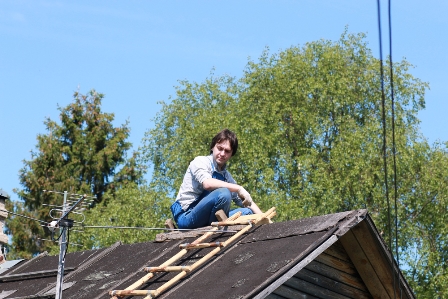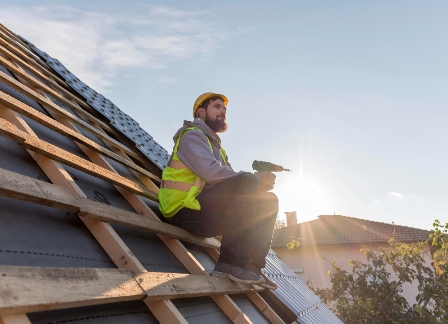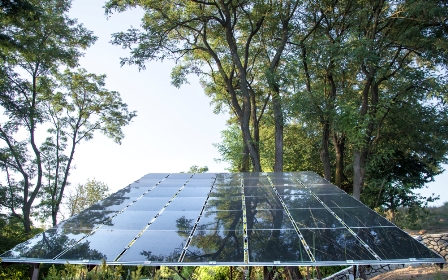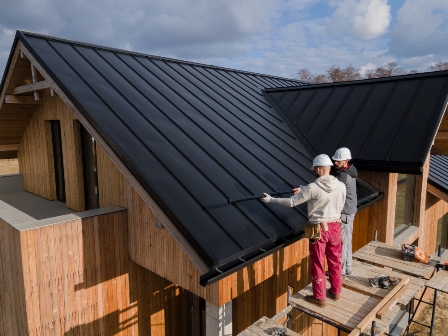Roofing nightmares are more than just bad dreams; they can be a homeowner’s worst reality. A well-maintained roof is crucial for the integrity of a home, protecting it from the elements and ensuring the safety of its occupants. In this article, we will delve into the various aspects of roofing nightmares and provide valuable insights on how to steer clear of them.
Choosing the Right Materials
Selecting the appropriate roofing materials is the foundation of a successful roofing project. Opting for quality materials is essential, as poor choices can lead to a multitude of problems down the line. Cheap or substandard materials may save money initially, but they often result in costly repairs and replacements.
Hiring the Right Contractor
The success of any roofing project heavily depends on the skills and reliability of the contractor. Homeowners must exercise caution when selecting a contractor, being mindful of warning signs such as vague contracts, unverifiable references, and unrealistically low estimates.
Proper Roof Inspection
Regular roof inspections are key to identifying potential issues before they escalate into nightmares. While professional inspections are recommended, homeowners can perform simple checks, such as looking for loose or missing shingles and examining the attic for signs of leaks.
Ventilation and Insulation
Proper ventilation and insulation are often overlooked aspects of roofing that significantly impact its longevity. Poor ventilation can lead to moisture buildup and mold growth, while inadequate insulation can result in energy inefficiency and discomfort inside the home.
Avoiding Improper Installation
Even the highest quality materials can fail if not installed correctly. Signs of a poorly installed roof include uneven shingle placement, visible gaps, and improper flashing. Homeowners should carefully vet contractors and ensure they have a proven track record of successful installations.
Budgeting Wisely
Setting a realistic budget for a roofing project is crucial to avoid financial strain. Homeowners should account for potential hidden costs, such as repairs to the underlying structure, and be wary of contractors offering significantly lower estimates than their competitors.
Weather Considerations
Weather plays a significant role in the success of roofing projects. Scheduling work during favorable weather conditions is essential to prevent delays and ensure the quality of the installation. Contractors should consider the climate of the region when planning projects.
Dealing with Pest Infestations
Pests can cause significant damage to roofs, compromising their structural integrity. Preventive measures, such as regular pest inspections and prompt removal of any nests or hives, are essential to protect the roof from infestations.
Regular Maintenance Routine
Regular maintenance is the key to a long-lasting roof. Homeowners should develop a routine that includes cleaning gutters, removing debris, and inspecting the roof for any signs of damage. Proactive maintenance can prevent minor issues from turning into major problems.
Understanding Warranties
Roofing warranties can be complex documents, and homeowners should take the time to read and understand them fully. Knowing the terms and conditions of the warranty can save homeowners from unexpected expenses and ensure they receive the coverage they expect.
Handling Emergency Repairs
Preparing for unexpected roof damage is essential. Homeowners should have a plan in place for emergency repairs, including contact information for reliable contractors and a temporary solution to mitigate damage until professional help arrives.
Sustainable Roofing Practices
Incorporating eco-friendly and sustainable practices into roofing projects benefits both the environment and the homeowner. Options such as cool roofs, which reflect more sunlight and absorb less heat, can contribute to energy efficiency and reduce the environmental impact of the home.
Educating Homeowners
Educating homeowners about proper roof care is a crucial step in preventing nightmares. Online resources, workshops, and informational sessions can empower homeowners to make informed decisions about their roofs, leading to better maintenance practices.
FAQs
Regular professional inspections are recommended at least once a year, with additional checks after severe weather events.
Signs include mold growth in the attic, an unusually hot or cold indoor temperature, and a musty odor.
Look for contractors with a proven track record, positive reviews, and proper licensing. Ask for references and check their work portfolio.
A warranty typically covers manufacturing defects, while insurance covers damage from unforeseen events like storms or accidents.
While some tasks can be done by homeowners, it’s advisable to have professional inspections and major repairs handled by experienced roofers.
Conclusion
Avoiding roofing nightmares requires a proactive and informed approach. From choosing the right materials and contractor to understanding warranties and embracing sustainable practices, each step plays a vital role in ensuring the longevity and functionality of a roof. By staying vigilant and addressing issues promptly, homeowners can protect their homes from the costly consequences of roofing nightmares.






